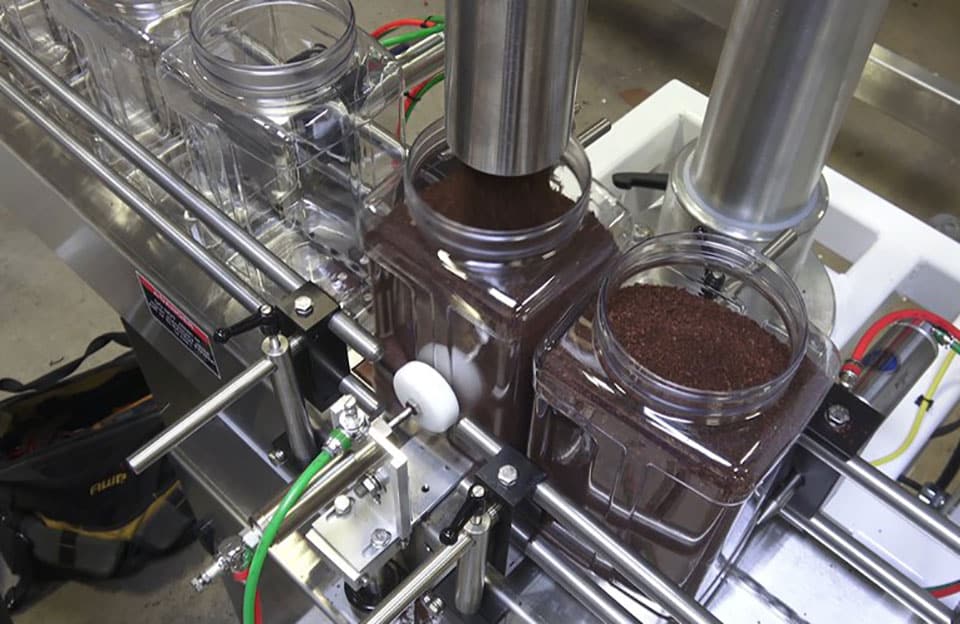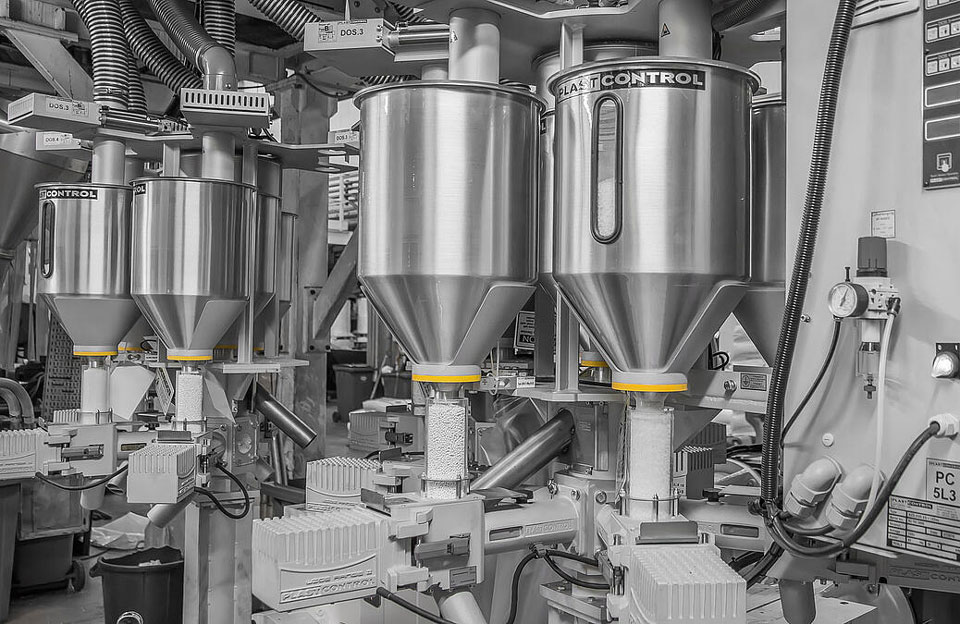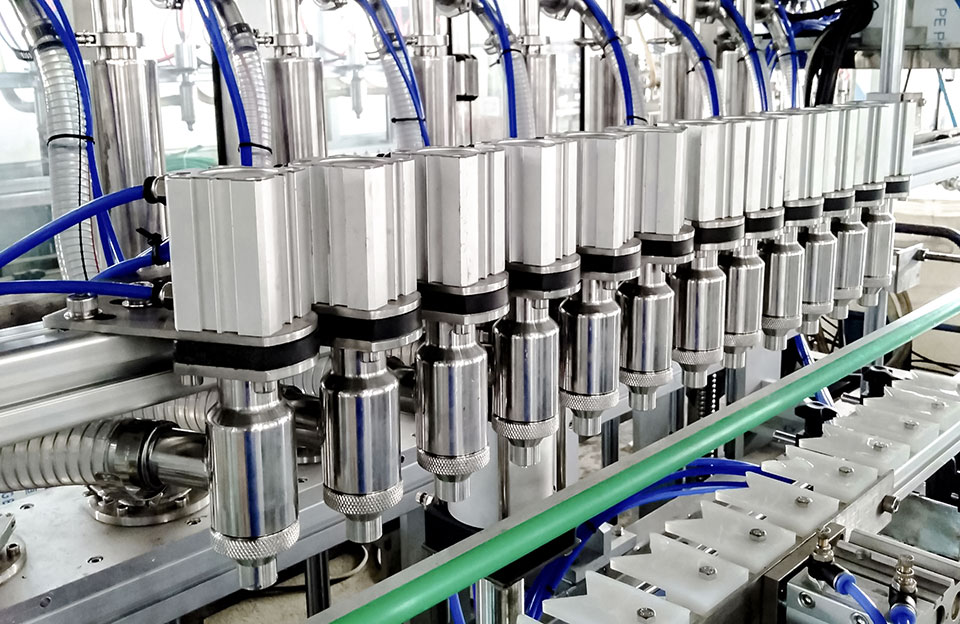A conveyor system is one of the most important components of a powder filling machine, and it facilitates the automated handling and transport of containers during the powder filling process. It consists of various mechanical elements designed to move containers smoothly and efficiently from one stage to another.
The primary purpose of a conveyor system in a powder filling machine is to streamline the workflow and increase productivity. By automating the movement of containers, the conveyor system ensures a continuous and consistent flow, improving overall efficiency.
The Function of the Conveyor System in Powder Filling Machine
Conveyor systems in powder fillers perform several important functions to facilitate an efficient and accurate filling process. The following are the main functions of the delivery system:
- Container Feeding: The conveyor system in powder filling machine feeds empty containers into the filling machine. It receives containers from the line’s loading point or earlier stages and moves them toward the filling station. This feature ensures a continuous supply of containers for filling, eliminating the need for manual feeding and increasing overall productivity.
- Container Orientation and Alignment: The conveyor system in powder filling machine properly aligns and orients the containers before they reach the filling station. This ensures that the container is in the correct position to receive the powder. Proper alignment helps prevent spills, ensures consistent filling, and maintains product quality.
- Speed and Control: Conveyor systems incorporate speed controls that allow the operator to adjust the speed of the conveyor according to filling requirements. This control ensures that containers move through the filler at the desired speed, matching fill rates and optimizing the overall efficiency of the process.
- Container Unloading: After the containers are filled, a conveyor system transports them from the filling station to the next stage of the packaging process. This may involve capping machines, labeling machines, or further handling and processing machines. Conveyor systems ensure a smooth, continuous flow of filled containers, reducing bottlenecks and maintaining production rhythms.
- Safety and Contamination Prevention: Conveyor systems have safety features that protect operators and prevent contamination. It may include emergency stop buttons, safety sensors, and guards to ensure safe operation.
- Customization and Adaptability: Conveyor system in powder filling machine can be customized to accommodate various container sizes, shapes, and materials. It can be adjusted to handle different containers, including bottles, jars, bags, or cans. This versatility allows the powder filling machine to be used for a wide range of product and packaging requirements.
How to Maintain a Conveyor System to Run Smoothly
Maintaining a conveyor system ensures smooth operation and prevents unexpected breakdowns or interruptions. Here are some key tips for maintaining a conveyor system in powder filling machine effectively:
- Regular Cleaning: Clean the conveyor system regularly to remove dust, debris, or spilled material. This includes cleaning the belts, rollers, and other components. Ensure the cleaning methods and materials are compatible with the conveyor system’s construction and materials to avoid damage.
- Lubrication: Check the manufacturer’s guidelines for lubrication requirements and lubricate the moving parts as recommended. Proper lubrication helps reduce friction, extend the lifespan of the conveyor components, and keep the system running smoothly.
- Inspect for Wear and Damage: Conduct routine inspections of the conveyor system in powder filling machine to identify any signs of wear, damage, or misalignment. Look for worn belts, damaged rollers, loose connections, or abnormal vibrations. Address these issues promptly to prevent further damage or malfunctions.
- Belt Tension: Ensure that the conveyor belt is properly tensioned. A loose or overly tight belt can lead to slippage, misalignment, or premature wear.
- Belt Tracking: Monitor the belt tracking regularly to ensure it stays aligned and centered. Misaligned belts can cause uneven wear, belt damage, or belt derailment. Adjust the tracking mechanisms to keep the belt in the correct position.
- Check Fasteners and Connections: Inspect the conveyor system’s fasteners, bolts, and connections to ensure they are secure. Loose connections can lead to misalignment, reduced efficiency, or potential safety hazards. Tighten or replace any loose or damaged fasteners.
- Monitor Motor and Drive Systems: Regularly inspect the motors, drives, and controls of the conveyor system in powder filling machine. Look for signs of overheating, unusual noises, or erratic behavior. Maintain the motor and drive systems according to the manufacturer’s recommendations or consult a professional if issues arise.
- Train Operators and Maintenance Staff: Provide proper training to operators and maintenance staff on the safe and efficient operation of the conveyor system in powder filling machine. Educate them about routine maintenance tasks, inspection procedures, and how to identify and address common issues. Please encourage them to report any concerns promptly.
- Keep Spare Parts and Components: Maintain an inventory of essential spare parts and components that may need to be replaced periodically, such as belts, rollers, bearings, and fasteners. These readily available items can help minimize downtime and ensure quick repairs when necessary.
- Follow Manufacturer’s Recommendations: Always refer to the manufacturer’s guidelines, maintenance manuals, and recommended maintenance schedules specific to the conveyor system.
Conclusion
The conveyor system in powder filling machine plays a vital role in automating container feeding, orientation, and movement. Adopting appropriate means to maintain the transmission system can effectively prolong the machine’s life and ensure the machine’s operating efficiency.


